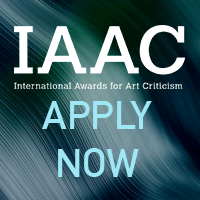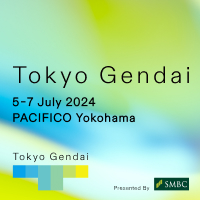Beauty and Essence in Kimsooja’s “Meta-Painting”
By Taeyi Kim
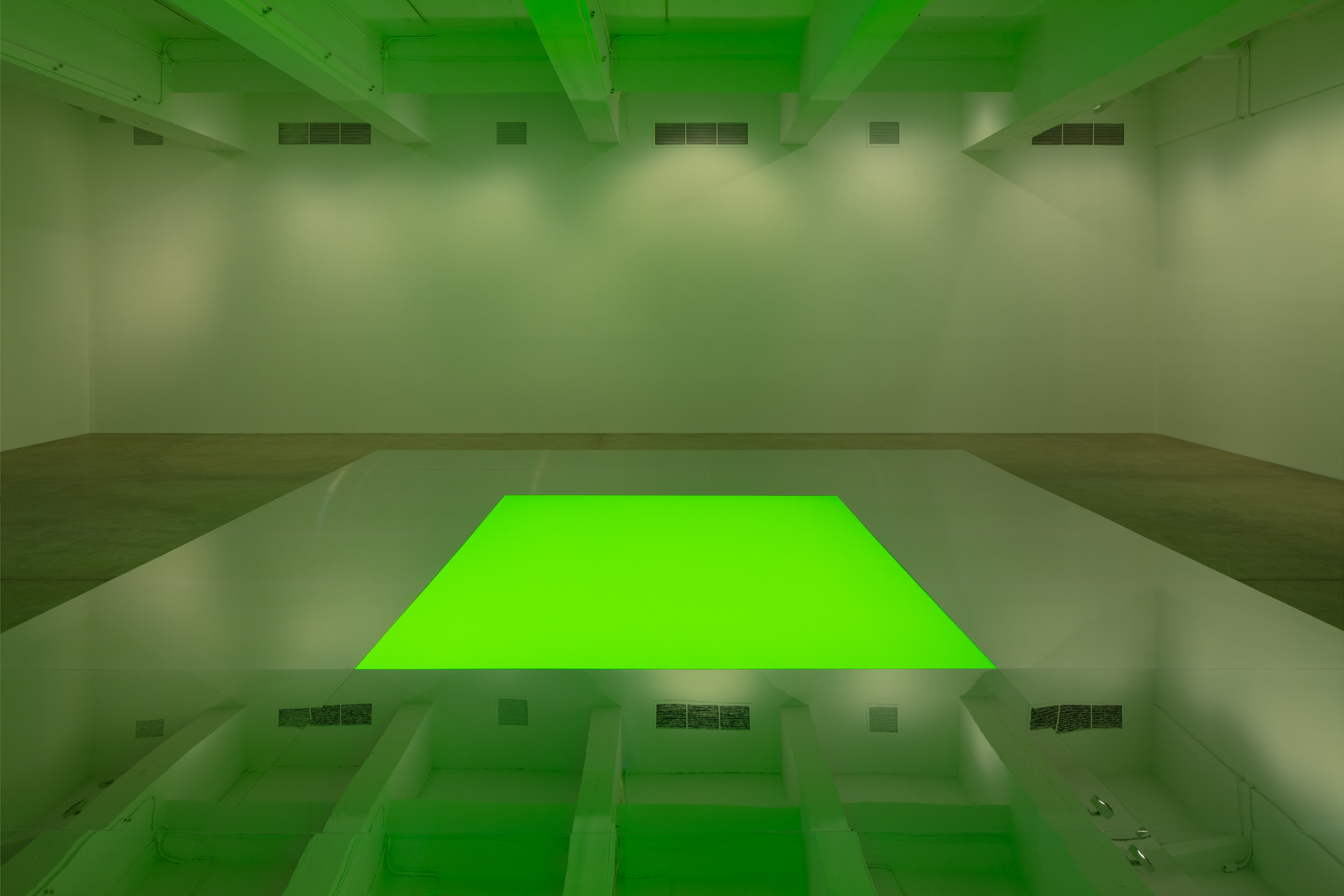
Installation view of KIMSOOJA ’s To Breathe, 2015, chromatic spectrum projection with mirror platform floor: 10 min 32 sec, dimensions variable, gallery installation: 9 × 675 × 900 cm, at Tanya Bonakdar Gallery, New York, 2024. Photo by Pierre Le Hors. Courtesy the artist and Tanya Bonakdar Gallery, New York / Los Angeles.
Apr 12–Jun 14, 2024
Kimsooja: Meta-Painting
Tanya Bonakdar Gallery, New York
To better understand the works of Kimsooja, it is worth briefly noting the role of bojagi—and ultimately, bottari—in Korean history and traditions. Bojagi, a woven textile, is an integral object in Korean life: parents use it as a blanket to keep food warm for their kids outdoors; mothers carry newborns on their backs with the cloth holding them up and tightening to the body; when a family member passes away, their ashes are tenderly cradled within the urn, swathed in a delicate white bojagi. Crafted with needlepoint stitches, this textile accompanies life’s journey from beginning to end, embodying warmth and care. When a bojagi wraps an object and is tied in a knot, it becomes a bottari, a shape and symbol that have been central to Kimsooja’s practice for over three decades.
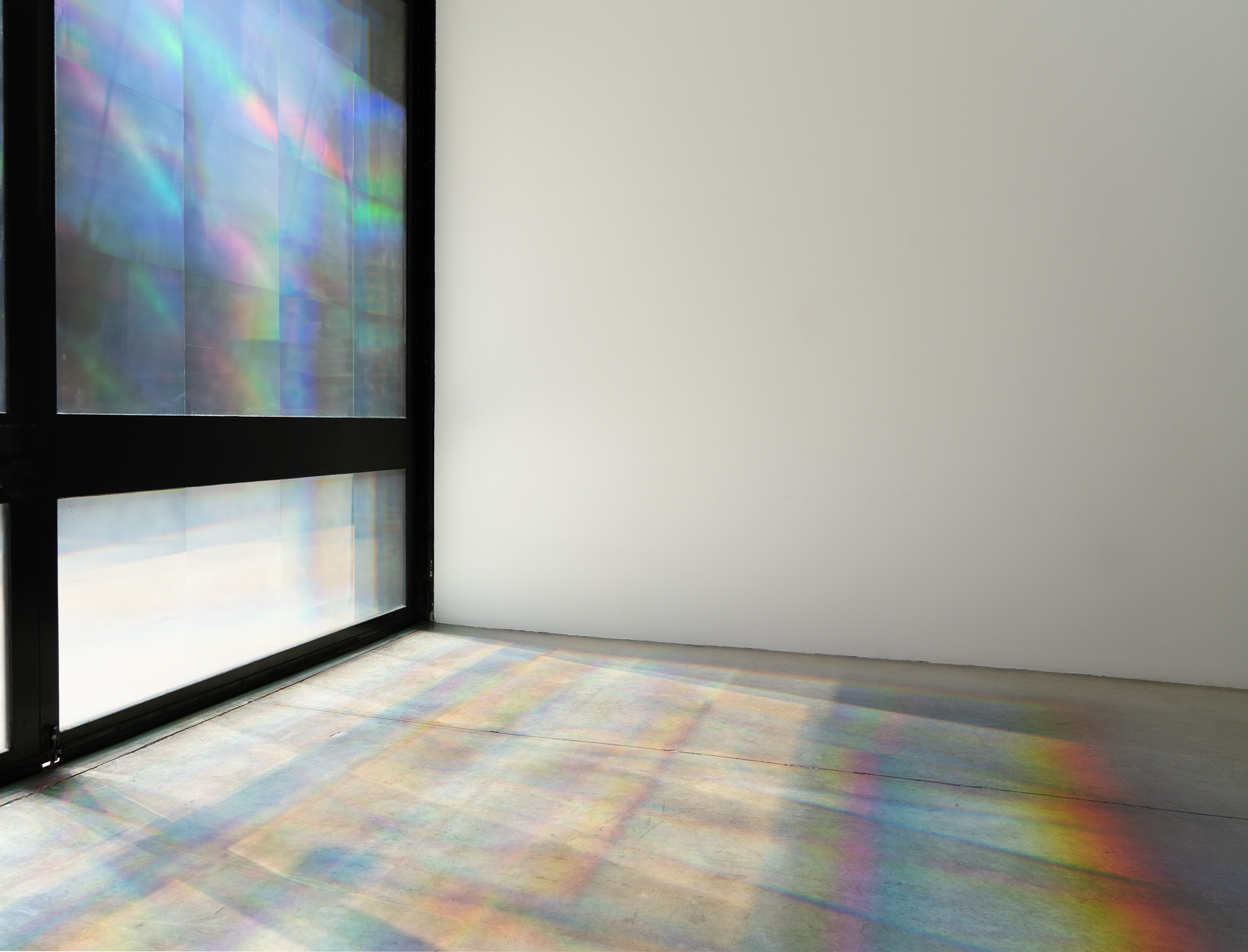
Installation view of KIMSOOJA ’s "Meta-Painting" at Tanya Bonakdar Gallery, New York, Apr 12-Jun 14, 2024. Photo by TBG. Courtesy the artist and Tanya Bonakdar Gallery, New York / Los Angeles.
The first major showcase of Kimsooja’s works in New York in 20 years, “Kimsooja: Meta-Painting” centered around the themes of sewing, weaving, and wrapping. The exhibition began with To Breathe (2024) at the gallery entrance, visible from the outside. A diffraction grating film on the large window channeled outdoor light inside, creating a rainbow spectrum that tinted the gallery’s floor with rainbow colors. From inside the gallery, the window transformed the ordinary view of the street into a surreal image: on the ground of the gallery, the shapes of people walking by created a plaid pattern, resembling the warp and weft of weaving. As the underlying motif in Kimsooja’s practice, this pattern becomes identified as a fundamental structure—an architectural bottari—of both spirit and world.
In the 1980s, Kimsooja primarily focused on bottari as a physical object, utilizing various mediums like performance, video, and photography. However, her To Breathe series (2003–24) signals a shift, expanding the materiality and color of the bottari into conceptual, light-focused works. Her residency at MoMA PS1 in 1992 was a pivotal moment, marking the beginning of her global presentations of site-specific installations in France, Germany, Switzerland, and beyond. With this exposure, her works from the 2000s began to embody her nomadic lifestyle, reflecting the unique features and cultures of each site and local or regional forms of making. Inside the main gallery at Tanya Bonakdar, across from the window, was another iteration of To Breathe (2015). This version features a wide ten-meter-wide mirrored floor that diffuses vivid colors from a chromatic spectrum projection in the middle. Stepping onto it, viewers can observe changing colors—from green to pink, orange, and yellow—while encountering their own reflection. Looking from the outside, the perceivable view was transformed into a moving image, turning the indoor dwellers into a needle gliding across the flat landscape.

Installation view of KIMSOOJA ’s Deductive Object: (Un)fold, 2023, Korean rice paper, 104.5 × 73 × 6 cm each, at Tanya Bonakdar Gallery, New York, Apr 12-Jun 14, 2024. Photo by Pierre Le Hors. Courtesy the artist and Tanya Bonakdar Gallery, New York / Los Angeles.

Details of KIMSOOJA ’s Deductive Object: (Un)fold, 2023, Korean rice paper, 104.5 × 73 × 6 cm. Courtesy the artist and Tanya Bonakdar Gallery, New York / Los Angeles.
While the two exhibited versions of To Breathe (2015 and 2024) reflected the artist’s expansion into immersive site-specific installation and experimentation with color and light, the works on the first floor adopted a more painterly format. On one side of the wall hung Deductive Object: (Un)fold (2023), part of the Deductive Object series, ongoing since 1990. The three iterations of crumpled hanji (Korean rice paper) show the creases shaped by the artist’s hand as she rolled it rolled into a sphere and then unfolded the paper. For Kimsooja, hand-molding a sphere is a psychological and meditative act—in the artist’s words, a “spherical shape in [one’s] mind.”
In the innermost room, viewers encountered three linen canvases on wooden frames suspended from the ceiling, softly glowing as the sunlight filtered through them. Each canvas was accompanied by a bundle of bottari. This recent series, Meta-Painting (2019– ), echoes its display in Sweden four years ago, when the artist used linen spun from flax she planted and harvested. The laboriously cultivated linen and weaving together allude to the performative elements of local textiles, artisanship, and agriculture. The quiet yet solid presence of linen bottaris in Meta-Painting, made from used linen clothes, situates the series in a life-generating cycle from emergence to demise.
While the recurring motif of bottari in Kimsooja’s practice draws inspiration from Korean culture, its conceptual depth transcends far beyond geographical and national boundaries. Within its folds lies a revelation of vulnerability—a delicate yet powerful readiness to embrace the world’s entirety, an essence beautifully portrayed by the artist in “Meta-Painting.”
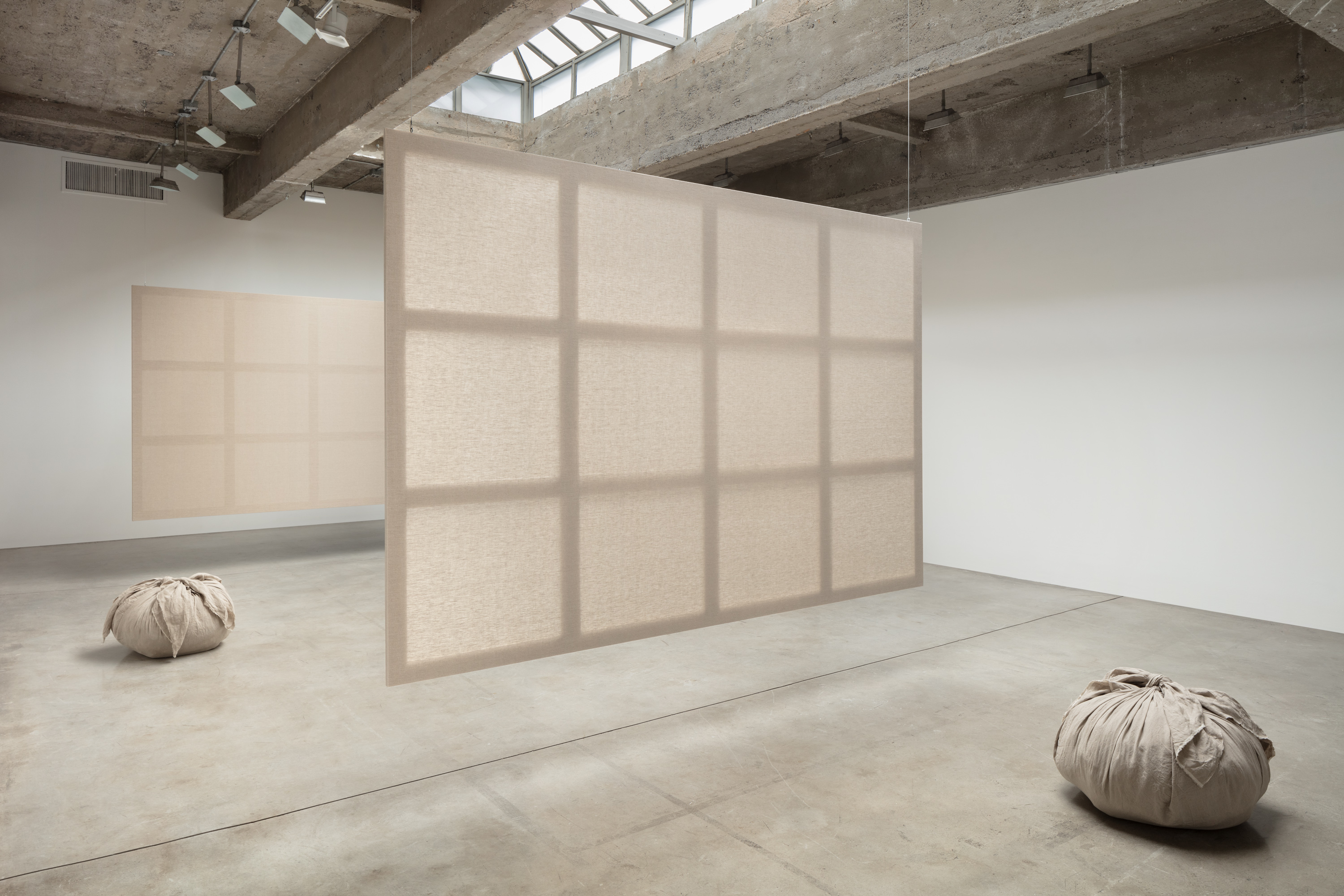
Installation view of KIMSOOJA ’s Meta-Painting, 2024, linen canvases stretched on wooden frame, bottari made of linen canvas and used linen clothes, 200 × 300 × 3 cm (painting); 50.8 × 71.1 × 68.6 cm (bottari), at Tanya Bonakdar Gallery, New York, 2024. Photo by Pierre Le Hors. Courtesy the artist and Tanya Bonakdar Gallery, New York / Los Angeles.
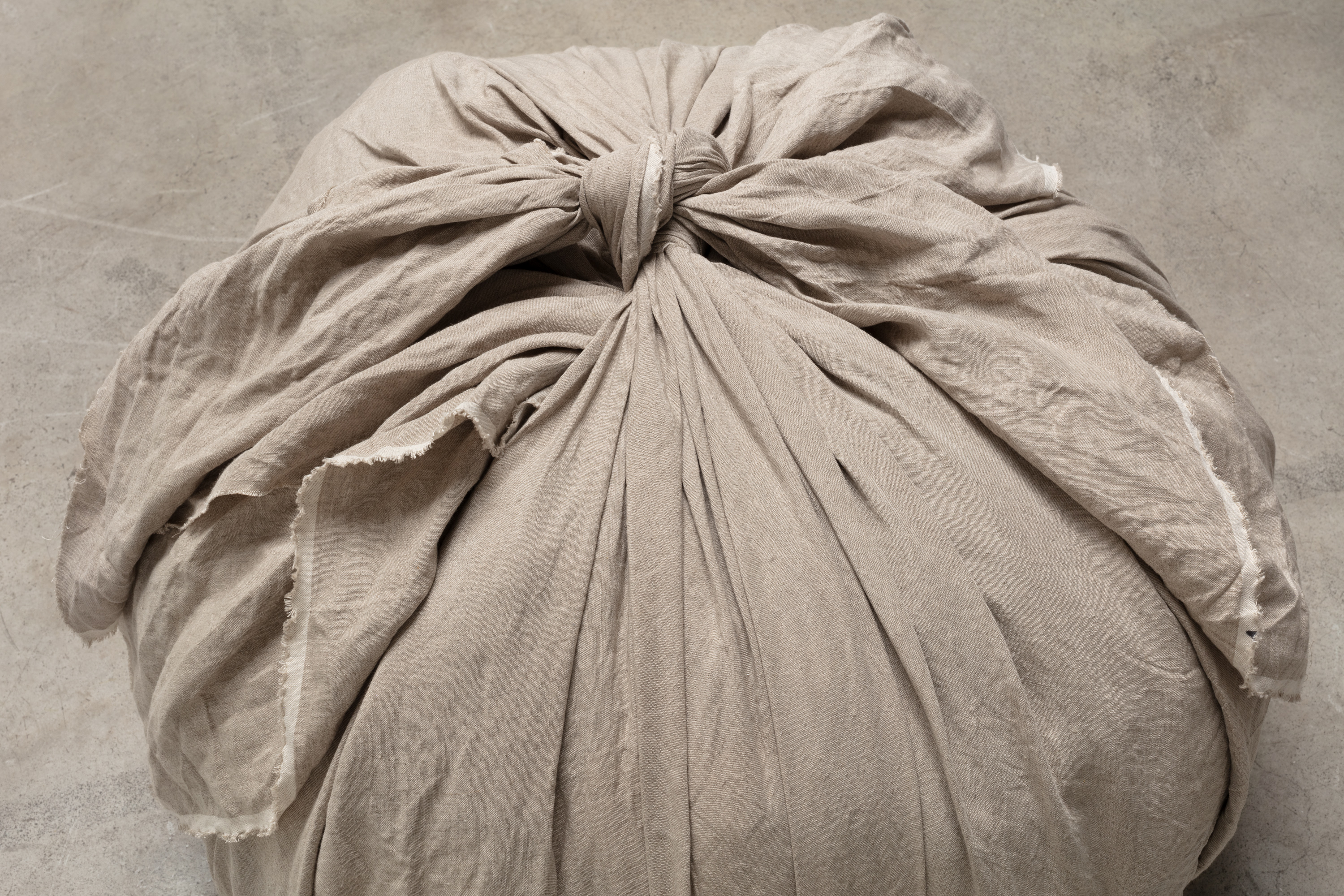
Details of KIMSOOJA ’s Meta-Painting, 2024, linen canvas stretched on wooden frame, bottari made of linen canvas and used linen clothes, 200 × 300 × 3 cm (painting); 50.8 × 71.1 × 68.6 cm (bottari). Photo by Pierre Le Hors. Courtesy the artist and Tanya Bonakdar Gallery, New York / Los Angeles.
Taeyi Kim is a curator and writer based in the US and Korea.

